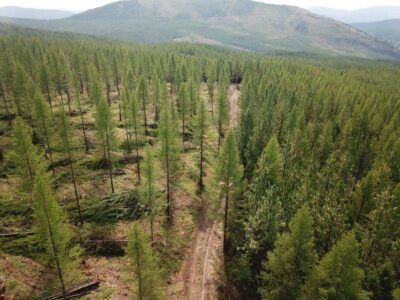Which City Has the Best Parks? Trust for Public Lands Releases Annual ParkScore Ranking.

The Trust for Public Land (TPL) recently released its annual ParkScore index, which ranks the park systems of the fifty largest U.S. cities. As with all scorecards, the methodology is imperfect and the metrics are somewhat crude; but seeing how U.S. cities compare across uniform parameters is a good starting point for a larger conversation about what is important to us as a society in urban planning, parks, recreation, and environmental justice.
In the ParkScore index, Cities are scored along three equally-weighted parameters:
- Acreage: median park size (20 points) + park acreage as a percentage of city area (20 points)
- Service and Investment: spending per resident (20 points) + playgrounds per 10,000 residents (20 points)
- Access: percentage of population within a 10-minute walk of a park (40 points)
Each city’s total points are then normalized to a score of up to 100 points. The Trust for Public Land uses GIS technology to identify park area and demographic information. In the 2013 rankings, the winner is . . . .
The City of Minneapolis! Minneapolis ranks #1 in the country (you betcha!), with a total score of 81/100 points. The top ten cities are:

1. Minneapolis
2. New York City
3. San Francisco, Sacramento, and Boston
6. Washington
7. Portland
8. Virginia Beach
9. San Diego
10. Seattle
Los Angeles receives a middling rank of #34; Chicago is #16; Oakland is #18; and Fresno is dead last. Nationally, TPL found that the median park size is 5.1 acres; median park acreage is 9.3 percent of total city area; median spending is $76 per resident; and a median of 64 percent of the population lives within a 10-minute walk of a park.

As mentioned above, scorecards are not the best vehicle for conveying complexity and nuance. For instance, inherent in the crafting of any index are assumptions about the relative importance of parameters and assumptions that parameters serve as adequate proxies for the larger concepts the index seeks to quantify. For instance, ParkScore uses park spending as a proxy for park quality. Additionally, not all aspects of an issue may be easily quantifiable. In the case of scorecard like ParkScore, which examines large and complex cities, the need the simplify data collection with brightline rules means that some nuance is necessarily lost.
It is important to note that the ParkScore index takes into account only park and other public space within municipal boundaries, thus leaving out accessible public areas just outside of the city. For example, in the case of Los Angeles, this means that the index did not account for the dozens of small jurisdictions that pepper the LA metropolitan region (as an illustration for those not familiar with the crazy geography of LA County, I live in the City of Los Angeles but am within a 10-minute walk of three other cities), nor did it account for recreation areas like the Angeles National Forest or the Pacific Ocean.
Messy study boundaries aside, the ParkScore parameters raise interesting questions about what we care about in our urban park systems. According to the Trust for Public Land, parks are important to our communities because:
Close-to-home opportunities to exercise and experience nature are essential for our physical and mental well-being. Studies show that parks can encourage physical activity, reduce crime, revitalize local economies, and help bring neighborhoods together.
But, are all parks created equal?

Do we care just about public acreage, or also the types of resources that are included within that public space? Are a hundred small parks equal to one Central Park? Does a park have to be “green” to serve the community purposes TPL mentions above, or should public spaces like community centers, music halls, and schools count? What about bike paths, or waterbodies?
Does it make sense to compare Los Angeles’ Topanga State Park—the world’s largest urban wildland—to the Jefferson Monument? Does the metric “parks within a 10-minute walk” paint an accurate picture of access and recreational justice, or does it encourage cities to juke stats with tiny, poorly maintained pocket parks that can only service a small number of people at a time? What about the availability of public transportation to parks? Should we give special consideration to certain demographics such as children, the elderly, low-income households, or communities disproportionally burdened with pollution? Are park size, quality, and access of equal importance?

I encourage you to explore the interactive maps, comparison functions, and city profiles on the ParkScore website to see how your favorite big city ranks and learn more about the country’s urban parklands. Regardless of how we measure the quantity, quality, and accessibility of urban parks, I think we all can agree that that the United States has some great urban parks—as well as some room for improvement.
Reader Comments
6 Replies to “Which City Has the Best Parks? Trust for Public Lands Releases Annual ParkScore Ranking.”
Comments are closed.








Reblogged this on Jugraphia Slate.
Reblogged this on Jugraphia Slate.
Reblogged this on baraputrakelana11.
Reblogged this on baraputrakelana11.
Reblogged this on Brew City Royalties Investment Club.
Reblogged this on Brew City Royalties Investment Club.